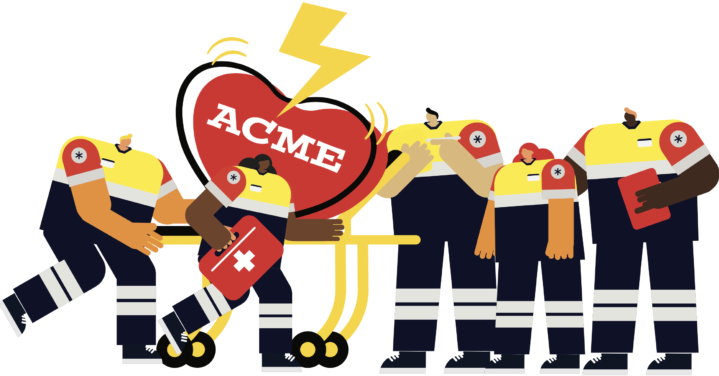Leaders must be ready to change. Many are not.
Have you enjoyed being disrupted? Are you ready for more? Humans suffer from normalcy bias. We toil through change until we become used to it, then we accept it as normal – and assume that things will continue tomorrow as they are today. But those who have normalized disruption might be in for a shock. The path of disruption is exponential, not linear. It is almost impossible to become inured to the disruption that surrounds us, because what surrounds us will shift chaotically, and accelerate.
Exponential disruption can be fiendishly difficult to envisage. To frame it, reverse it: look not to the future, but the past. The computing power that put men on the moon in the 1960s now lets consumers hear corny tunes when they open greeting cards. In just seven decades, space exploration became the Hamster Dance.
So rapid is the advance of digital that it is impossible to predict what technology will be capable of in just a few years. What we can forecast are broad trends, so leaders can ride the wave, rather than be drowned by it.
The healthcare revolution will be digital
Medical devices that use smartphones to relay information will allow healthcare to reach new communities, particularly in the developing world. And in the same way that mobile payments transformed peer-to-peer trade in Africa, e-diagnostics will revolutionize personal healthcare.
American manufacturing is coming back
The advance of tech will reduce the unit costs of manufacturing to such a degree that the East’s edge over the West will be minimized. As the cost of transportation becomes a greater proportion of total costs, transpacific shipping will be increasingly unwise. Prepare for more onshoring: American companies making American goods in America.
Competition will arise almost instantly
Barriers to entry will be rapidly eroded to the point where startups can enter new playing fields and compete in weeks, not years. Setting up shop has never been easier. A threat to your business will arise with little warning: ‘disrupt or be disrupted’ is a rallying cry for the future.
Shift ready?
Are leaders ready for these shifts? Many are not. Leadership amid exponential disruption demands a capability to change at an unprecedented rate. Normalcy bias pervades companies just as it does individuals: “What has been, will be.” The reality is that what has been will not be again.
For all the smart talking, too many corporates remain bound by hierarchies. Pyramids cannot foster the fluidity required for firms to morph from disrupted to disruptor. Hierarchies were designed to direct the routine labors of factory staff. Yet what is routine will be disrupted – and eradicated – by technology.
Agile firms of knowledge workers demand a new kind of leadership.
Communication holds the key to that agility. The paradox is that technology has not devalued the human touch, but placed a premium on it. Increasingly, connections are made between employees at breakneck speed by dint of the computing power in their pockets.
The lengthy email or corporate letter is dead: the agile leaders who command the future communicate with their teams the way that their teams communicate with each other.




